While it might not a heavyweight in the smartphone industry, it’s hard to overlook LG’s contribution to the same. At a time when headphone jacks were disappearing like a puff of smoke from smartphones, audiophiles turned over to LG’s doorsteps as the brand’s then flagship offerings shipped with high-res 32-bit Hi-Fi DAC. More recently, the company unveiled an outrageous swivelling phone called the LG Wing that puts forward a unique and dare I say, unusual take on smartphone form factors. Now that the shift towards foldable smartphones is catching steam, LG has approached the same in a very different way. You might remember last year’s G8X ThinQ (review) which came with a DualScreen case accessory, thereby giving users a secondary screen to interact with alongside the main screen. That way, you could basically open the phone like a book and essentially multi-task better using both screens.

However, in my review of the phone, I had concluded that the G8X was creating solutions to problems that don’t really exist. Furthermore, the smartphone’s build quality left a bit to be desired. Enter, LG Velvet, a good-looking successor which carries on the G8X’s legacy by offering a dual-screen case, albeit backed by slightly dated specs. In markets outside of India, the LG Velvet is a 5G smartphone powered by the mid-range Snapdragon 765G SoC. However, in the country, LG has opted for a Snapdragon 845 version of the phone. Qualcomm is soon going to release the Snapdragon 888 chipset in a month’s time, which begs the question – is the LG Velvet, with its dual-screen pizazz worth it? More importantly, do you want a phone with two displays? Let’s try and answer them both in this review.
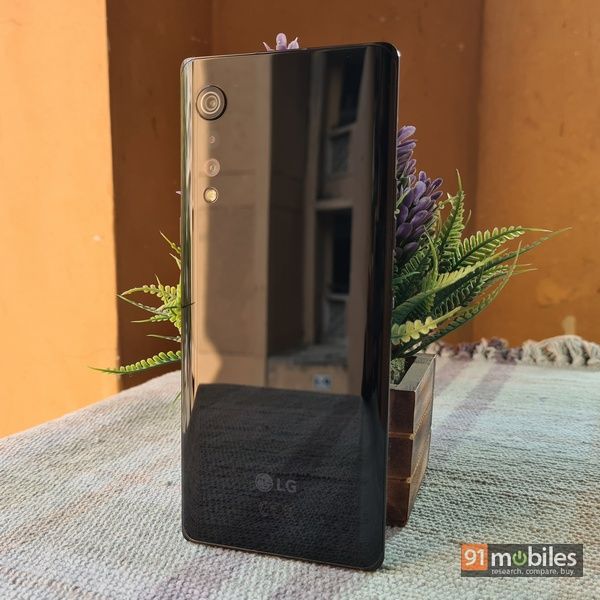
Verdict
The LG Velvet on its own is one of the most elegant looking devices you can buy currently, but using an old chipset does not help the phone’s cause. The DualScreen accessory is more of a problem than a solution and masks the real charm of the Velvet. Purchase this device only if you are heavily invested in multi-tasking for which operating two screens at a time is a necessity.
Design and display
- Display: 6.8-inch Super AMOLED
- Resolution: FHD+ (2,460 x 1,080)
- Refresh rate: 60Hz
- Protection: Gorilla Glass 5
- SIM: Dual nano
- Connectivity: USB Type-C
Let’s put the DualScreen case aside for a minute and marvel at the LG Velvet’s premium looks. The handset’s narrow aspect ratio and tapered edges lend it an incredibly lightweight yet premium in-hand feel. The Velvet is an instrument of precision, be it with its triple camera setup that sits flush to the chassis, or the elegant curves on the sides or its razor-thin girth at just 7.9mm. It would be a travesty to slap the phone in a case, DualScreen or otherwise, yet the glass sandwich construction nearly slipped from my hands on more than one occasion. The weight and width strike a perfect balance making for a very comfortable user experience. Oh yes, the phone is also IP68 certified for water and dust resistance. The rear of the device, as expected, is a fingerprint magnet too but despite that, I must admit – it’s been a while since a phone’s design has left me this impressed. LG Velvet’s undulating black colour scheme carries over from the front to the back and is very easy on the eye.
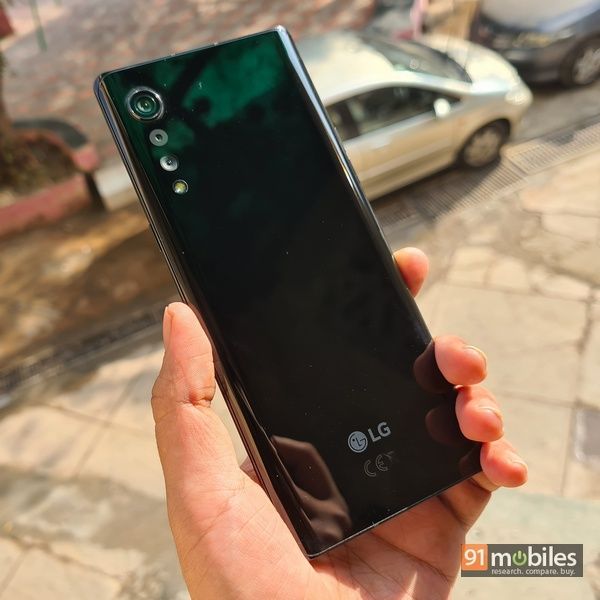
As for ports, the Velvet features a 3.5mm headphone jack, although it lacks the company’s signature quad DAC seen on LG’s earlier flagship phones. Apart from that, there is a Type-C port and a speaker grille at the bottom, with the earpiece at the top doubling up as a speaker as well. The volume controls are present on the left, along with a dedicated Google assistant toggle, while the power button is on the phone’s right-hand spine. All buttons feature a slit-like design owing to the curvature of the back and front but despite that, they offer ample tactility. Up top, the LG Velvet features a dual nano-SIM slot with room for an additional microSD card slot as well. There is no physical fingerprint sensor as the LG Velvet uses the in-display variety.
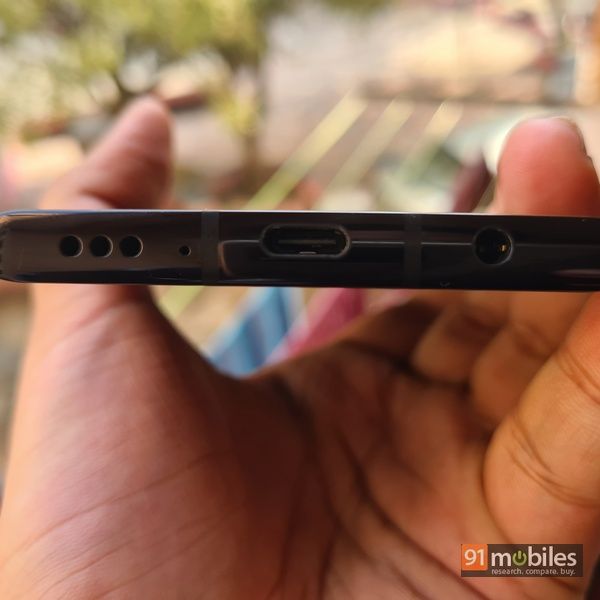
LG has always been at the top of the smartphone display game along with Samsung. Previous LG phones that I’ve used had some of the nicest panels with solid colours and optimum brightness levels and the scenery remains unchanged with the LG Velvet. The smartphone features a substantially large 6.8-inch Full HD+ (2,460 x 1,080) P-OLED display with a cinematic 20.5:9 aspect ratio. As a matter of fact, the LG Velvet showcases deeper reds and more pronounced blacks as compared to my Galaxy S20 Plus (review). LG doesn’t specify how bright the display can get, but I didn’t face any legibility issues even when viewing the screen under the harshest of sunlight. My only gripe? LG is still sticking to a 60Hz panel when competitors like Xiaomi are pushing 144Hz on the Mi 10T Pro (review). Also, the waterdrop notch housing the selfie camera looks outdated in front of a deluge of punch-hole cameras in the market. Furthermore, the curved edges don’t contribute to any extra screen real estate and instead only add to the phone’s aesthetics. Consequently, the panel on the Velvet is surrounded by relatively thicker bezels. Even so, the visual experience coupled with the phone’s excellent audio backup (more on that later) make it a joy to watch any content on the LG Velvet. The phone has WideVine L1 certification for HD streaming on Netflix, Amazon Prime and Hotstar and there is also HDR support on the LG Velvet.
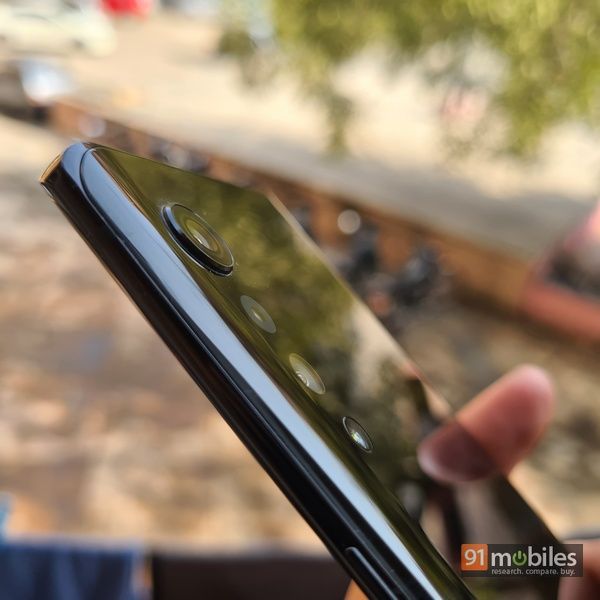
Dual-screen
Till now, I’ve described the LG Velvet as a standalone device and have not paid much attention to its dual-screen case. Since the case happens to be the biggest selling point of the phone, let’s now talk about how you can operate the phone with it. Point to note, currently, the LG Velvet can only be purchased with the case included. Packaged in a separate box, the LG DualScreen accessory is slightly thinner than what I had previously seen with the LG G8X. Towards the back, the case offers a more rugged finish and has precise cutouts that align with the Velvet’s cameras. Towards the front, the case comes equipped with an ambient display that shows basic information such as time, date, day, battery percentage, and notification icons. Inserting the Velvet in the case is a fairly straightforward process, but taking it out requires unnecessary effort.
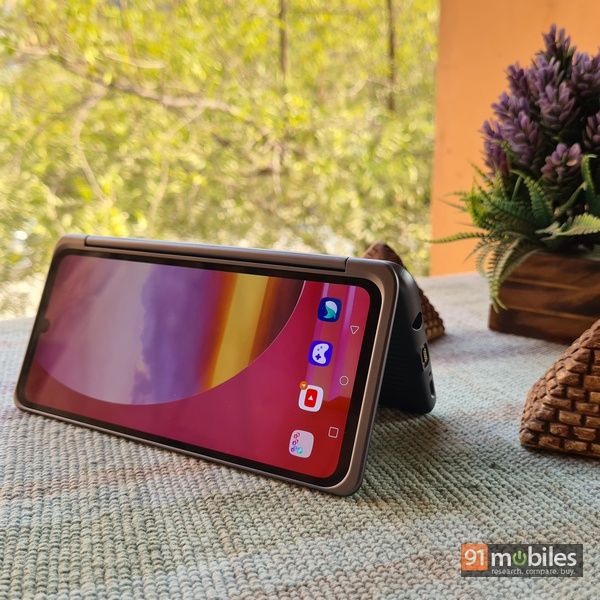
The phone snaps with the case’s Type-C port and is firmly held in place. Much like the G8X ThinQ, the DualScreen case provides ample protection to the device from all sides due to its thick construction. The secondary display is an exact replica of the Velvet’s screen minus the sloping edges. However, the screen is not exactly adjacent to the Velvet, sitting ever so slightly above it due to the hinge’s construction. The entire setup can swivel 360-degrees.
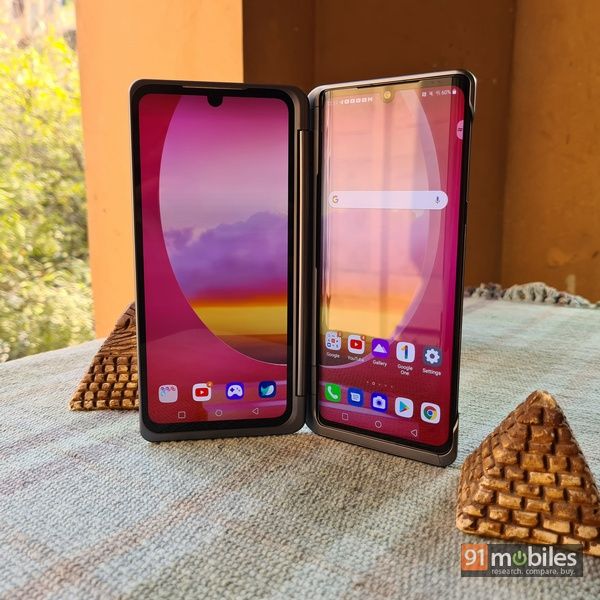
Let’s get into some of the advantages of such an arrangement. I had discussed most of them in my earlier review of the G8X DualScreen. The most important aspect is the ability to open two apps simultaneously on both screens which can be a big productivity boost. For instance, you can watch a YouTube video while replying to a text on WhatsApp, or, you can use the camera app to take photos and view them simultaneously in the gallery. If you’re into game streaming, then you could quite easily play a game on the bottom screen while watching your Twitch or YouTube Live stream on the top. I was able to access Gmail on one screen while monitoring my Swiggy order simultaneously. The second screen also works to immediately display the photo I have taken while the viewfinder is on the first screen. Slack can be open on one side, while WhatsApp can be viewed on the second screen and so on and so on. Then, there’s the LG GamePad utility that was also present on the G8X ThinQ, and it provides virtual controls and joysticks on the bottom screen whilst gaming on the Velvet. These buttons can be remapped to perform the required in-game actions. It goes without saying that LG Velvet’s dual-screens also make the phone an excellent e-book reader. Also, the entire second screen can be made into a virtual keyboard to give you a better typing experience. Bottom line: The biggest use case for the DualScreen is the ease of multi-tasking.
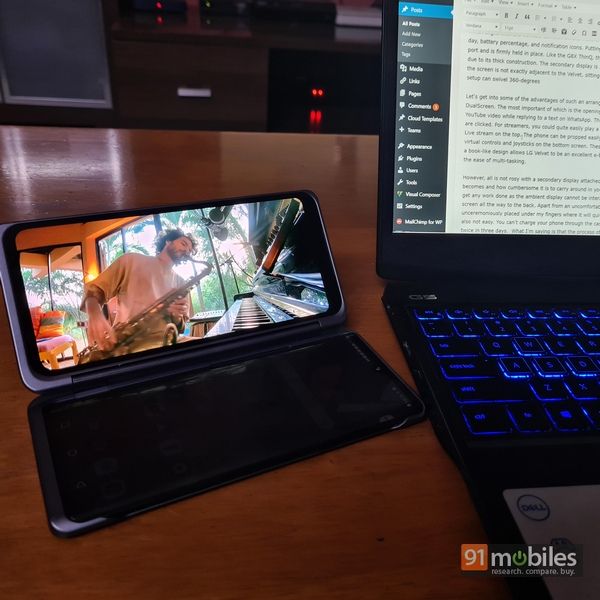
However, all is not rosy and it didn’t take long for the setup’s thickness to affect my day to day usage. With the case attached to the phone at all times, the otherwise slender LG Velvet becomes cumbersome to carry around in your pocket. Then there is the added task of having to open the case to get any work done as the ambient display cannot be interacted with. While you can type on the phone with the secondary display rotated all the way to the back, the experience is uncomfortable, to say the least. Even then, the second screen is unceremoniously placed under my fingers where it will quite likely get scratched. In this positioning, reaching the volume and Google Assistant buttons is also not easy. Adding to my woes, you can’t charge your phone through the case unless you use a very small magnetic adapter that I nearly lost twice in three days. Removing the phone from the case places significant stress on the Type-C port which is very likely to get damaged over time. Suffice it to say, using the phone with the dual-screen case isn’t as seamless an experience LG would have you believe.
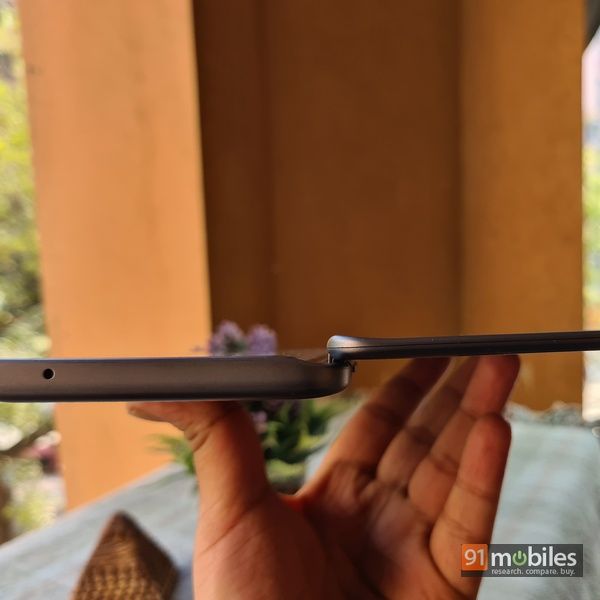
Cameras
- Rear cameras: 48MP main, 8MP wide-angle, and 5MP depth
- Front cameras: 16MP
- Video shooting: 4K @ 30fps, 1080p @ 30/60fps, 720 @ 30/60/240fps
LG has made use of a triple-camera setup which includes a 48MP primary lens, an 8MP ultra-wide, and a 5MP depth sensor. Towards the front, housed inside the waterdrop notch, is the phone’s 16MP selfie-shooter with f/1.9 aperture. LG phones have generally faired well in the camera department and the Velvet holds up to the company’s reputation. Daylight performance is very satisfactory with crisp detailing even in an overcast environment. The camera focuses rapidly on the subject and the shutter speed is just as fast too. While Samsung phones tend to introduce more saturation in the shots, LG’s colour science with the Velvet sways in favour of balanced hues. As such, there is realism in shots with colours reproduced more to the actual tone of the subject. You can digitally zoom in to 10X but the image quality takes a bad hit after 3X. Even so, the dynamic range is ample and the sensor’s exposure handling is also quite good in most conditions. There is a fair bit of warping at the edges in ultra-wide shots but detailing at the centre and colour reproduction is on par with the primary sensor. There are no macro capabilities on the ultra-wide sensor like we have seen a couple of phones. Finally, the depth sensor does its job of background separation for some very good portrait shots.
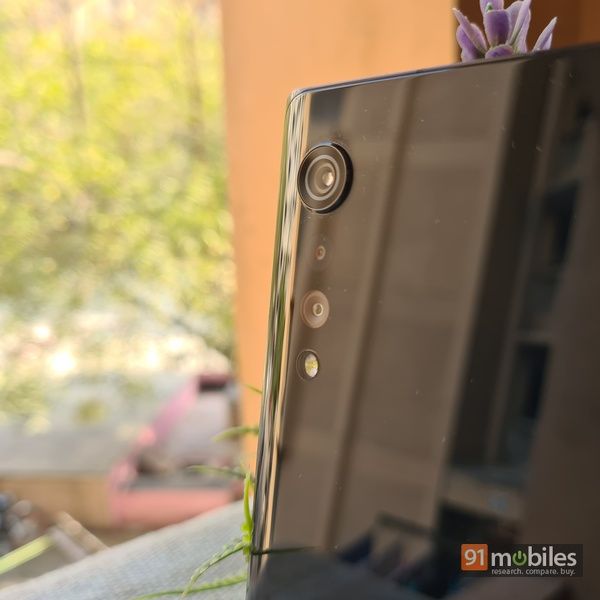
At night, the camera churns out pretty impressive shots even when there is little external lighting from street lamps. There is a dedicated Night Mode, but the need for it arises scarcely unless you are shooting something in extreme darkness. The primary sensor’s exposure and detailing are quite good for low lighting conditions but the ultra-wide lens will not give you any usable shots. Shadows and highlights are brought out in most of the scenes with autoHDR. In short, you will not be disappointed shooting with this device irrespective of the lighting conditions.
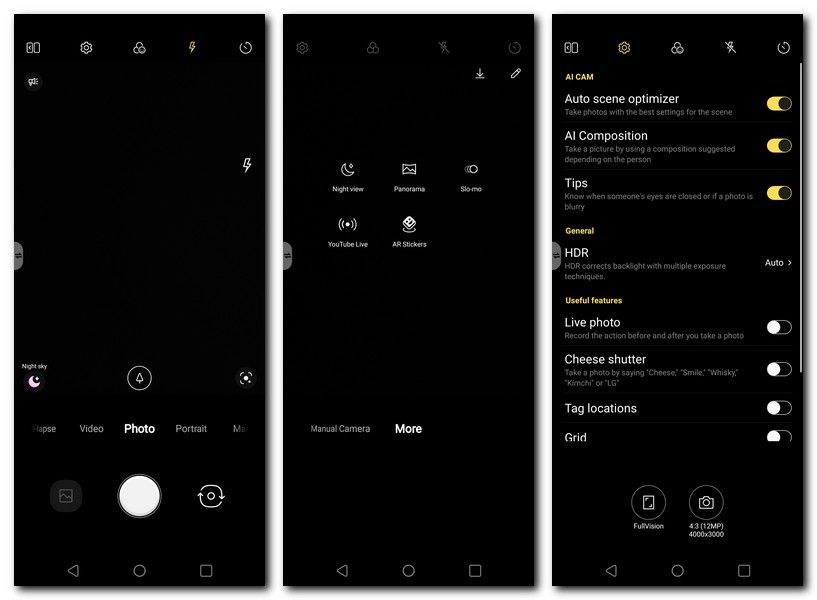
The 16MP selfie shooter did a decent job when the lighting was good. Skin tones matched and there was no overzealous sharpening of facial details. However, as the lighting dropped, exposure was not being handled well and shots were turning out to be increasingly noisy. With the DualScreen accessory attached you have something called a reflector mode wherein the second screen throws some more natural light on your face for a better shot. Not very effective but a viable alternative to the blinding screen flash of the main screen. In the video department, the LG Velvet can shoot up to 4K @ 30fps, 1080p @ 30,60fps and 720p @ 30,60, 120 fps. To be fair, the video quality is not bad, but there are much better options to shoot videos such as the iPhone SE 2020 (review) or the OnePlus 8T (review).
Performance and software
- Chipset: Snapdragon 845
- RAM: 6GB
- Storage: 128GB, expandable to 2TB
- Software: LG UX 10 with Android 10
LG Velvet utilises a chipset that made its debut in flagship smartphones more than two years back. The Qualcomm Snapdragon 845 is not really a bad SoC, but it is past its time. Most other competitors, such as the OnePlus 8T, Realme X50 Pro (review), or iQOO 3 5G (review) pack in the much more refined 7nm Snapdragon 865 chipset. What this means is that LG Velvet lags behind not only in terms of raw power but also power efficiency. This is revealed prominently in benchmark scores when compared to the OnePlus 8T. LG Velvet’s Geekbench 5 single-core and multi-core scores happen to be 515 and 2,110 respectively while the same for the 8T are 868 and 3,147. As for Antutu, the Velvet’s 349,835 score is demolished by the 8T’s 591,424.
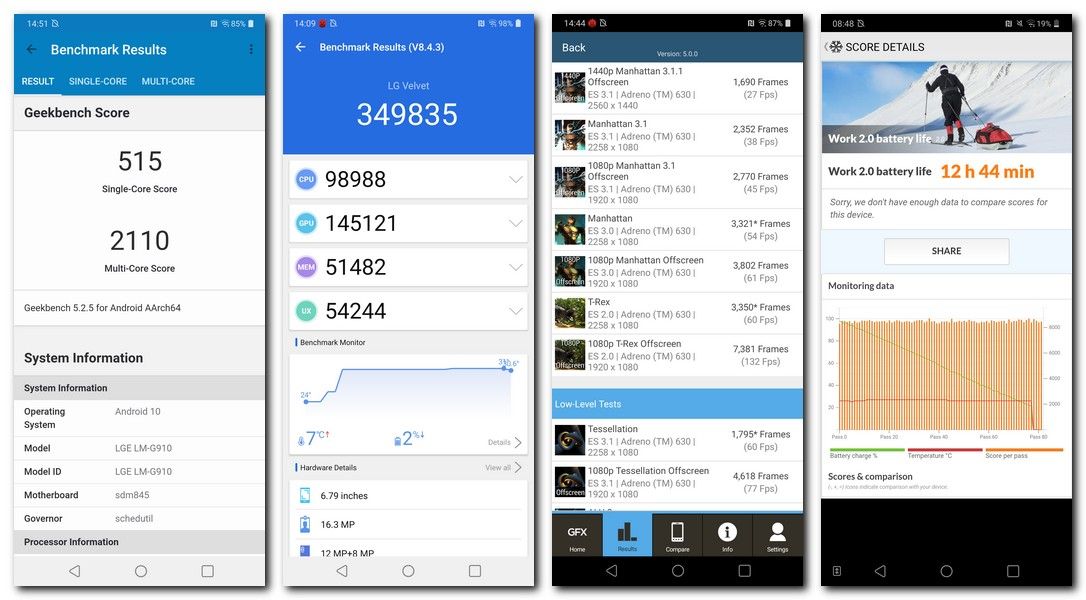
Part of the reason for the difference in scores is that the LG Velvet packs in only 6GB of RAM and 128GB of storage. The OnePlus 8T on test had 12GB of RAM but even the starting variant, priced at Rs 42,999 has at least 8GB RAM. The Velvet’s drop in performance is noticeable in daily usage with slight stutters when shifting between heavy apps like Instagram, Google Maps and Spotify. Also, the relatively lower RAM means fewer apps stay open in the background. However, normal usage is more than fine which includes opening a few tabs on Chrome, browsing through Facebook or streaming content. Scrolling and touch response was smooth and responsive. However, I wouldn’t play a lot of heavy intensity games like Call of Duty: Mobile or Shadowgun Legends owing to the occasional frame drops and overheating after about 30 minutes.
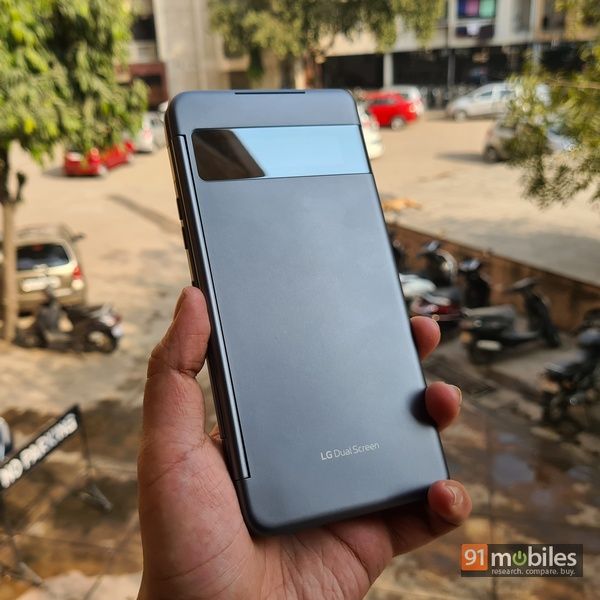
On the authentication front, the phone packs in an in-display fingerprint sensor that registers in a jiffy but it had a few mishits while recognising my finger. Face unlock is quick but the 2D face scan could be less secure than your fingerprint. LG has not certified the Velvet with wired High-res audio and also dispensed off with the fan favourite 32-bit Hi-Fi DAC. To compensate, the company has included a 3D Audio Engine that offers four settings which are Auto, Cinema, Music and Voice. The audio experience was quite immersive and full, although I did not have any LG phone with quad DAC to test it against. Wireless codecs like Qualcomm’s aptX, seen in most wireless audio products, is also supported on the Velvet. The dual speakers were extremely crisp, loud and had a depth to them, making them easily one of the best mobile speakers I have used in a while. The phone supports GSM/LTE/HSPA/VoLTE connectivity options. I tested the phone on Noida’s Jio network and faced no problems with call drops or microphone quality. There is a slit in the DualScreen case so that you can take calls with the case but you will need to open the case to answer the phone first.
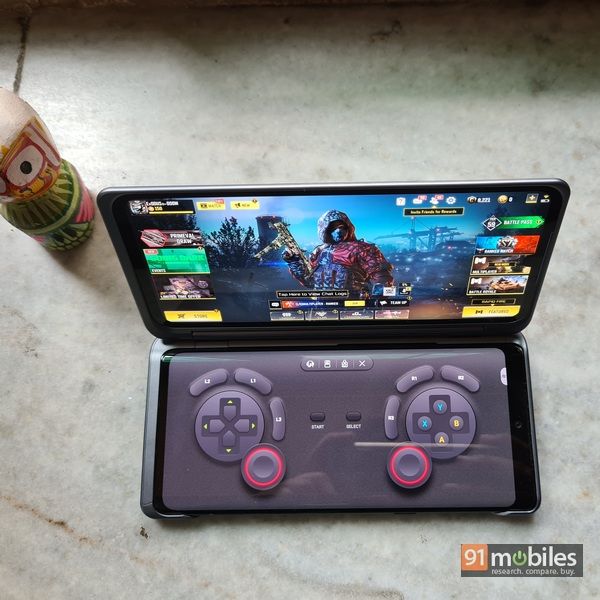
Software-wise, the LG Velvet comes with its customised skin called LG UX 10 based on Android 10. A significant part of the competition has already ported to Android 11, with some like the OnePlus 8T offering it out of the box. LG is also known to be notoriously slow in providing software updates, so that is something to keep in mind as well. However, apart from the lack of an app drawer, LG’s theme was to my liking. The skin is reasonably light on the OS with minimal bloatware, most of which is tucked away in different folders. The DualScreen accessory is instantly detected by the phone and the main display offers options to keep content playing on the main screen or shift it to the second screen. You also have the option to swap screens or put the main screen to sleep while you watch some content on the second display. Different apps work differently with the DualScreen and it will be a learning curve to find out what functionalities suit your needs.
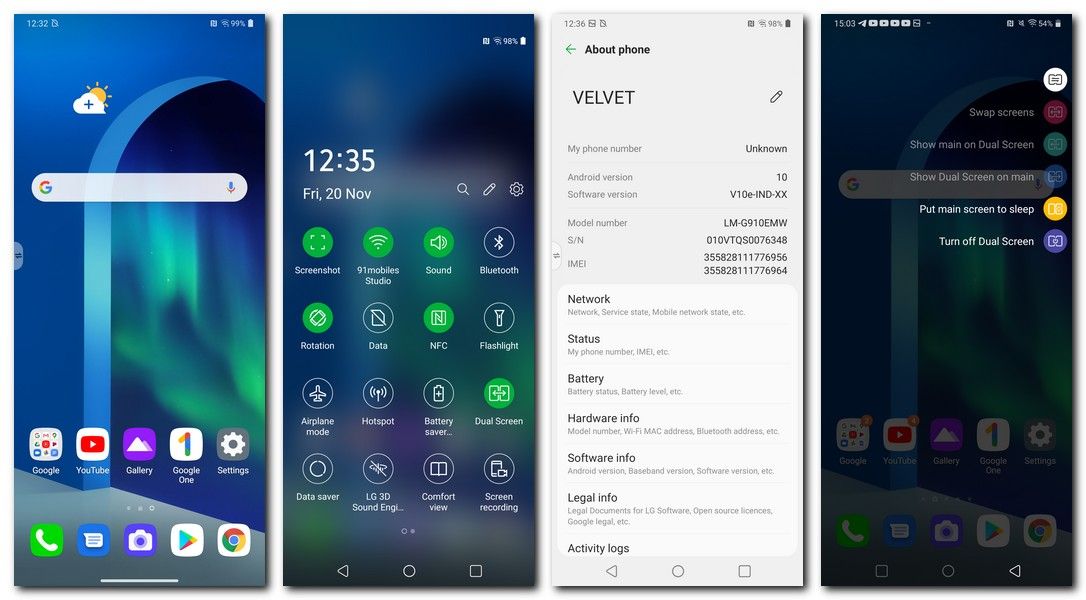
Battery
- Battery: 4,300mAh
- Charging speeds: 18W FlashCharge
- 0-50 percent: 50 minutes
Despite its remarkably thin chassis, the LG Velvet happens to have decent 4,300mAh battery housed inside, and the device lasts for reasonably long time. This includes powering a secondary display, although when not in use the screen remains in sleep mode. In PCMark 10’s Battery 2.0 test, the phone showed a score of 12 hours 45 minutes, which is a shade lower than what you would expect from a 4,300mAh cell. However, in real-world usage, even with the second screen, I was getting about 5 hours and 30 minutes of screen on time. The phone usually lasted me till the end of the day with about 15 percent battery left. You will get Qualcomm’s Quick Charge 4.0 on the Velvet which will juice up your battery at 18W. Compared to some of the 50W, 65W or even 120W chargers, the Velvet’s charging speeds are do seem slow. You will need at least two hours to charge from 0-100 percent.
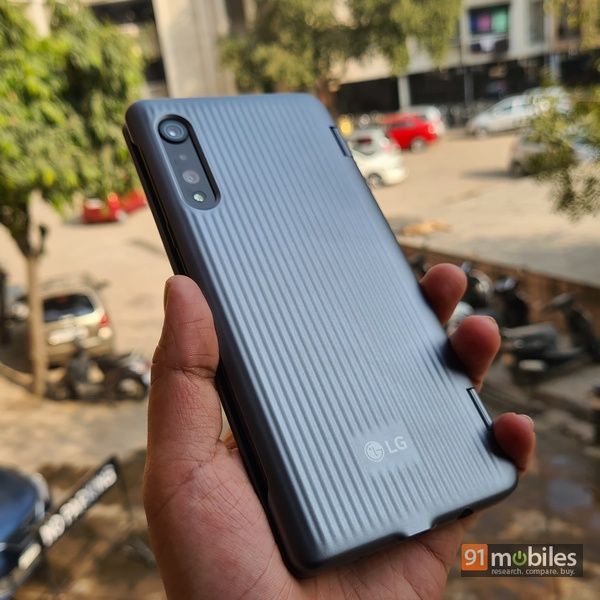
Final Verdict
On its own, the LG Velvet has one of the most best designs I’ve seen on a smartphone in some time. It has the looks, feels good in the hand and it is one of the thinnest phones on the market. Its image taking capabilities are excellent and the audio experience is one of the best.
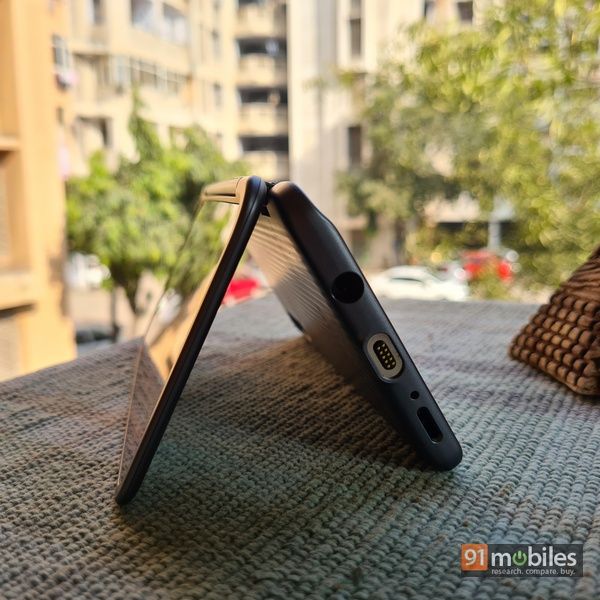
However, middling hardware, slow charging speeds, baseline refresh rate and a bleak promise of software updates play to the detriment of the device. Of course, you can’t buy the LG Velvet standalone as you could back in October when it was announced for a starting price of Rs 36,990. The DualScreen accessory is part of the deal and is inevitably going to be part of the conversation around the phone. My personal experience with the phone didn’t entail the usage of the DualScreen for a prolonged time. While the software implementation has been thought out, there are some obvious caveats like not able to drag and drop items from one screen to the other. Putting the phone in the case is fairly easy but taking it out is quite a task and I fear that constantly yanking on the case’s Type-C port will result in it breaking. With the case on, the LG Velvet loses a lot of its charm and feel-good factor.
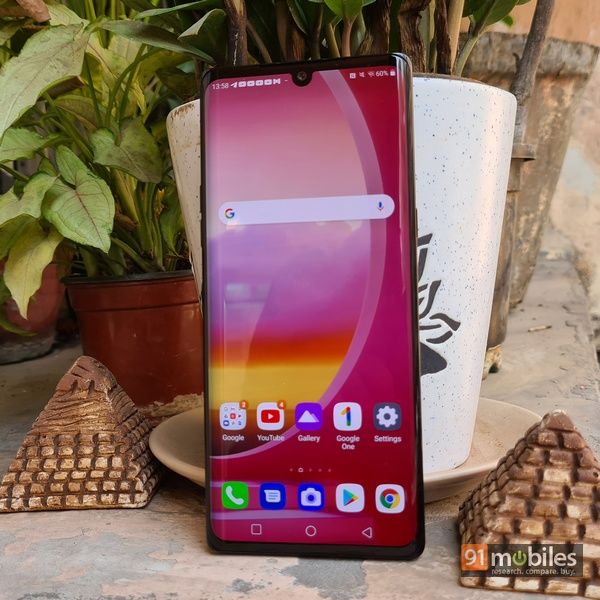
No matter how hard LG tries, a DualScreen will not really be a replacement of foldable displays. For these reasons, I think the LG Velvet and its compulsory DualScreen accessory might not be a right fit with the Indian audience. The OnePlus 8T or the iQOO 3 5G are some of the finest devices that you can purchase for Rs 44,990 from a hardware standpoint. Vivo’s X50 Pro is also a device worth considering for some of the top-end smartphone photography and video shooting. Buy the LG Velvet if you think the DualScreen can serve your purpose, and can fit a sizeably thick smartphone inside your pockets.
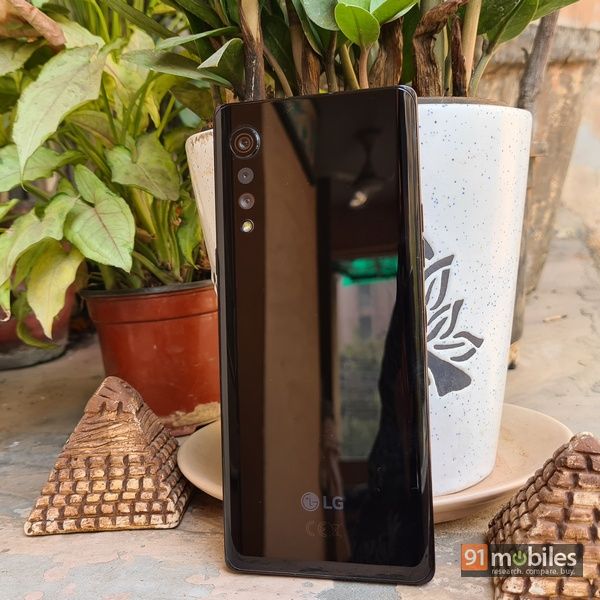
Editor’s rating: 3.5 / 5
Pros:
- Great design
- Capable cameras
- Decent battery life
- Amazing audio experience
Cons:
- DualScreen accessory is cumbersome
- Screen locked at 60Hz refresh rate
- Chipset should have been better
via ©91 Mobiles













No comments:
Post a Comment